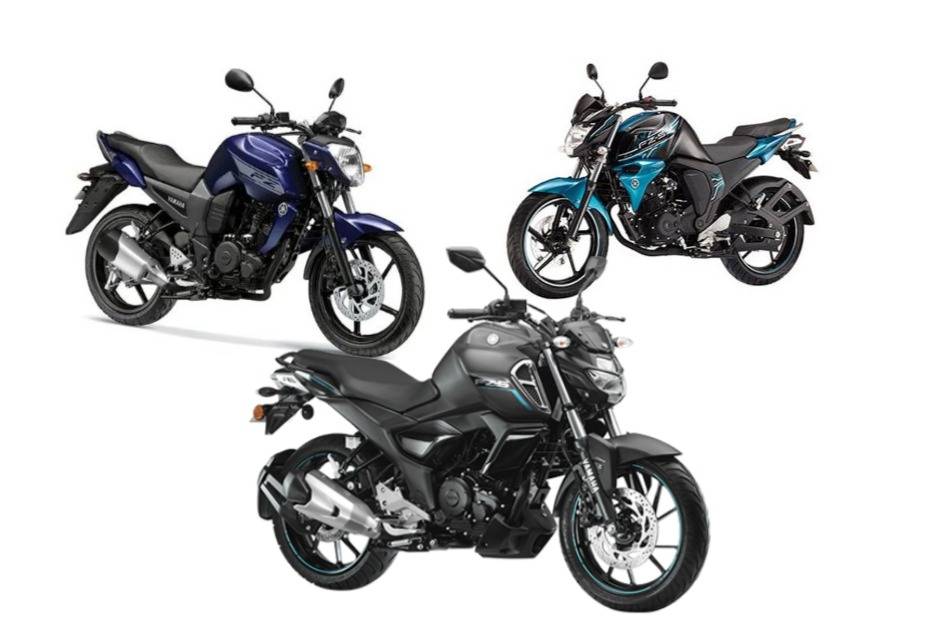Yamaha FZ Through The Ages: FZ-16, FZ-Fi, FS-S and more
Modified On Jun 3, 2020 12:42 PM By Benjamin Noel Graciasfor Yamaha FZS-FI V3
- 10186 Views
It’s been 10 years since Yamaha introduced its baby FZ series in India. So what better time than now to check out how the 150cc motorcycles has evolved over the years

During the early 2000s, the Bajaj Pulsar 150, the Hero CBZ and to some extent, the TVS Apache, ruled India’s 150cc two-wheeler segment. These bikes were the go-to choice for those looking for a motorcycle with punchy performance but were limited by their budget. In 2008, Yamaha introduced the FZ 16, which brought a more premium experience to the segment. It not only kick-started the “premium 150cc” segment, which has now evolved into what we now call the 160cc segment. The FZ16’s edgy and muscular design as well as its segment-first features found a connect with youngsters. Soon, it went on to become the best-selling 150cc motorcycle in the country. There’s no doubt the FZ series has evolved over the last decade, but not as much as we would have liked. Here’s a quick look at all the generations of the Yamaha FZ range.

Yamaha FZ16 (first-generation): Launched in 2008, the first-gen FZ16 was quite a looker at the time. While its rivals looked like scaled up commuter bikes, the Yamaha FZ16 looked like a scaled down version of Yamaha’s litre-class sport naked, the FZ1. With its mass forward design and the fattest rear tyre (140-section) at the time, the FZ16 brought international design language to our doorsteps and the public loved it. In fact, our assistant editor Priyadarshan was one of the first auto journalists to ride the bikes when it was launched. During that time, he was approached by two young men on a Pulsar who inquired about the bike and went on to declare that our seasoned editor would get lucky with the ladies thanks to this bike. What followed next for Priyadarshan, we don't know. It also got a minimalist all-digital instrument console, which was another segment-first feature. Powered by a 153cc air-cooled and carburetted motor, it made 14PS of power and 13.6Nm of peak torque, which was on par with the competition. But what impressed us the most was the motor’s refinement. The only other bike that came close in terms of refinement was the Honda Unicorn. Later, Yamaha introduced the FZ-S with additional features like a front visor, larger seat and a wider number plate holder.

Yamaha FZ-Fi and FZ-S (second-generation): In 2014, the FZ16 got its first major update, the biggest being the introduction of fuel injection. The engine was downsized from 153cc to 149cc as well. It also got Yamaha’s Blue Core engine technology that claimed to increase combustion efficiency. While performance dropped to 13.1PS and 12.8Nm, Yamaha claimed the motor now delivered better low-end torque. Fuel efficiency also went up by a claimed 14 per cent. The FZ-Fi v2.0, as it was now called, received new bits like a redesigned digital instrument console, turn indicators, split seats, exhaust, tail lamp and tyre hugger. It also lost 3kg and at that time, was the lightest bike in its class. Although the second-gen FZ was down on power, it gained on performance. The bike was priced at Rs 76,250 for the FZ-Fi and Rs 78,250 for the FZ-S (both prices, ex-showroom Delhi).
Also read: Yamaha FZ-S Fi road test review

Yamaha FZ-Fi and FZ-S (third generation) Ever since Yamaha launched the larger FZ25, it seemed to many enthusiasts that the company had forgotten about the smaller FZ range. But Yamaha has finally launched the third-gen FZ-Fi and the FZ-S in India and we are quite excited to put them through a thorough road test. These new bikes get cosmetic updates in the form of a new LED headlamp, new fuel tank with tank extensions, new instrument console, new exhaust end can and tyre hugger. The ergonomics seem to have been tuned more towards the comfort side thanks to a longer single-piece seat and taller handlebars. The motor puts out the same power as before. However, Yamaha says it has been tuned for better low speed response. The biggest update is the introduction of a single-channel ABS unit that should make both bikes a lot more safer. The new bikes are quite pricey when compared to their second-gen version. The 2019 FZ-Fi is priced at Rs 95,000, while the FZ-S gets a sticker price of Rs 97,000 (both, ex-showroom Delhi).
====
